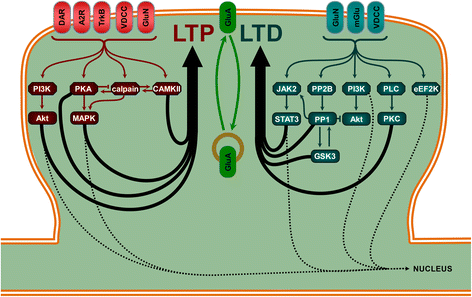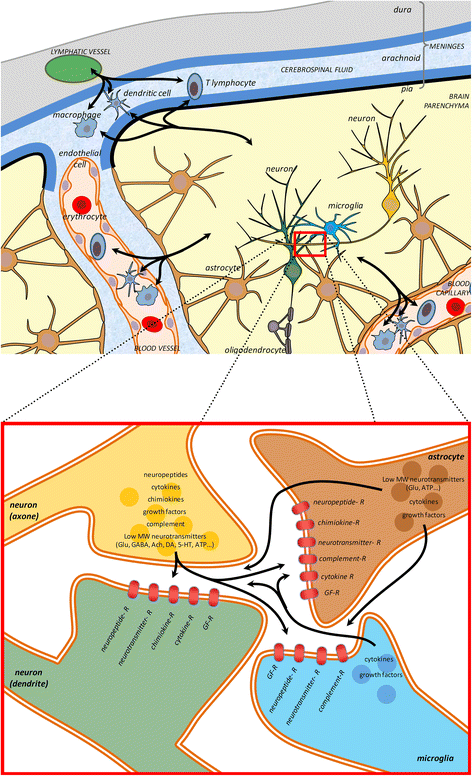Synaptoimmunology - roles in health and disease
- PMID: 28637489
- PMCID: PMC5480158
- DOI: 10.1186/s13041-017-0308-9
Synaptoimmunology - roles in health and disease
Abstract
Mounting evidence suggests that the nervous and immune systems are intricately linked. Many proteins first identified in the immune system have since been detected at synapses, playing different roles in normal and pathological situations. In addition, novel immunological functions are emerging for proteins typically expressed at synapses. Under normal conditions, release of inflammatory mediators generally represents an adaptive and regulated response of the brain to immune signals. On the other hand, when immune challenge becomes prolonged and/or uncontrolled, the consequent inflammatory response leads to maladaptive synaptic plasticity and brain disorders. In this review, we will first provide a summary of the cell signaling pathways in neurons and immune cells. We will then examine how immunological mechanisms might influence synaptic function, and in particular synaptic plasticity, in the healthy and pathological CNS. A better understanding of neuro-immune system interactions in brain circuitries relevant to neuropsychiatric and neurological disorders should provide specific biomarkers to measure the status of the neuroimmunological response and help design novel neuroimmune-targeted therapeutics.
Keywords: Immune system; Microglia; Nervous system; Neuroinflammation; Synaptic plasticity.
Figures



References
Publication types
MeSH terms
Grants and funding
LinkOut - more resources
Full Text Sources
Other Literature Sources
Medical
Molecular Biology Databases

